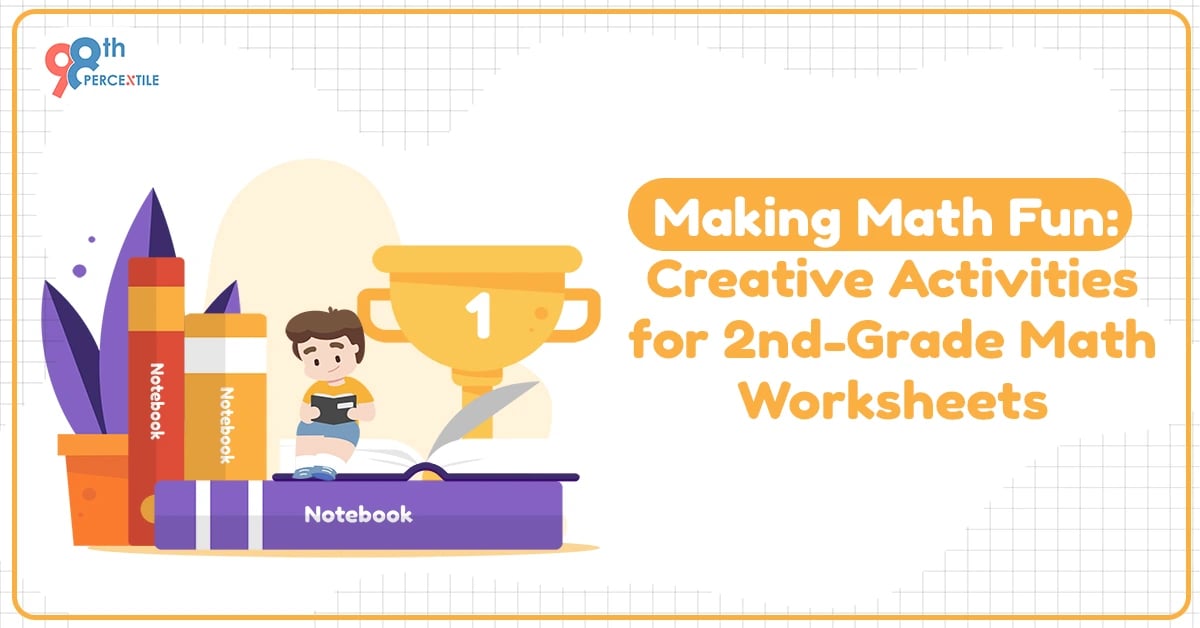We need to face the fact that Worksheets are not fun for students. It's just a tedious piece of work for them. Yes, we have all been there at least once. But teachers have no other means other than worksheets to help children learn or reinforce a concept. There are some instances when they need to know what kids know, so the most reliable way is to hand them a worksheet to exercise their skills. So what you can do is turn the math boring worksheets for kids into something fun and something that would require no extra time for preparation.
So we recommend you to try out these activities in the following weeks to solve 2nd-grade math worksheets.
- Split up Teams: This activity involves splitting up students into four teams and each group member to be named from one to four. You can start with a question from the worksheet which applies to all the four sides and give them time to solve the problem and come up with an answer. Now it's your turn to call up any number from one to four and ask that particular group member to share their answer. Make sure each of the member's workouts separately, and when one team shares the answer, others don't change theirs. So the group with the right answer gets points on the board. And finally, you count up the points and team with most points wins. In this way, you can solve a worksheet as well as ensure everyone is engaged in it without feeling tiresome or boring.
- Partners on Rotation: Ask your students to form a vast circle inside the classroom. Then, ask students to count off so that each child is either a one or two. Now ask your students to work out one problem in the worksheet discussing with his/her partner sitting next to them, all one's team up with two's. When they finish and are ready with an answer, call a random student and their partner to give their answer and discuss the methods they used for solving the question. So this helps in sharing different approaches to solve a problem. Next round, you need to shift the two's to one seat next with a new partner and continue this till the worksheet is complete.
- Worksheet Cut-Up: Cut up each question on a worksheet and distribute it to each group of five students. Consider your worksheet has ten questions on it, then you need to cut up each question to a separate strip of paper. Then ask your students to take turns choosing a role.
The roles are a person who reads the question, next person who paraphrases the question with few hints. Next student has to respond with an explanation of why they chose that answer. Now the fourth person can agree or disagree with the third person with a strong reason for it. The fifth person has to separate the paper and keep it in the agreed or disagreed section, and then they need to start fresh with the role of first-person. This should be continued until all the cut-ups are discussed. After that, students need to review the disagreed set of questions and come to a conclusion. - Flashcard Games: Ask your students to pair up and provide them a deck of flashcards with questions from the worksheet. The game has three rounds of review. First-round begins with the first student asking the second student, a problem in the flashcard. For this round, the first student can provide as many hints they want. Next for the second round, you can only get few hints, and in the following round, no clues to be provided. After completion of a round, ask them to switch and let the second student quiz the first student. Follow this till all the questions are reviewed and you can guide them for the ones they didn't find any answer. These flashcard games can help them to get to know better ideas from each other.
- Parallel Lines: Make students stand in two lines facing each other, and now you need to choose a question from the worksheet provided to them. Ask them the question and let them discuss it with the person they are facing. Give them time to come up with the solution. Now you can choose a random student and ask for an answer. To make sure both of them participate, you can ask for an explanation from the partner. Group discussions always open up different possible approaches to a question. For the next round, make students in one row move to the right, so they have a new partner. Carry on this way till all questions are done.
With these recommended activities, check if kids start to show interest in them. If they do, gradually include more of them over time and watch your students become more committed to workout math worksheets with great enthusiasm.
For more details, visit 98thpercentile. They offer Live, Online, K-12 Math, English (Reading & Writing), Coding programs that are geared to get your child a GRADE AHEAD in just 5 months. To get a hands-on experience of the 98thPercentile learning system, Book a FREE DEMO NOW!

 Students/Staff
Students/Staff Parents
Parents ElevatEd
ElevatEd













